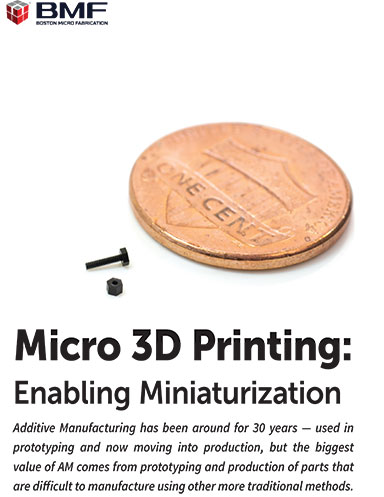Micro 3D Printing: Enabling Miniaturization
Additive Manufacturing has been around for 30 years — used in prototyping and now moving into production, but the biggest value of AM comes from prototyping and production of parts that are difficult to manufacture using other more traditional methods.

June 28, 2021
As all the noise settles concerning the benefits and drawbacks of additive manufacturing, what becomes most clear is that when fabricated parts are easy to make using standard machining methods, additive manufacturing becomes less and less necessary as a tool. Yet, when that is not the case, additive manufacturing becomes a very beneficial tool.
Additive manufacturing is an important and valuable solution when customers need to produce parts that are difficult to fabricate using standard machining methods, such as parts that include complex design features like internal cavities and geometries that cannot be machined in, and structural elements that make other machining processes too cumbersome or difficult to complete effectively.
It is a common understanding that nothing is more difficult to produce — for prototypes or production parts — than when miniaturization is critical.
Because miniaturization is a continual trend in most industries, especially medical devices, electronics connectors, and micro-electromechanical systems (MEMS), providing a way to use additive manufacturing becomes an important alternative to other production methods. In fact, the smaller the part that needs to be produced, the more valuable it is to have a machine that can manufacture those parts quickly and accurately.
Fill out the information below to download the resource.
Latest News








